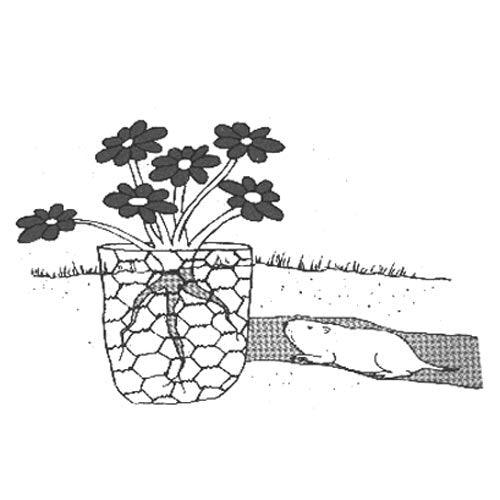Horseradish is a hardy perennial that grows in all zones except the hottest, low desert regions. Where you plant your horseradish depends on whether you intend to treat it as a perennial and leave it in place for years, or as an annual that you will re-plant each fall. For perennial planting, give it plenty of space, as it will reach about 3 feet tall by 2 feet wide. Plan on keeping it in line by harvesting all the lateral roots each year or it will re-sprout from these and soon you’ll have a grove that is very difficult to harvest. Plant in full sun to partial shade.
Horseradish grows in most soils, but prefers sandy loam and thrives on potassium. Amend your soil with sulfate of potash if needed. If you mulch in colder areas, wait until the soil is frozen before placing mulch, as horseradish dislikes any cycle of freezing and thawing. The mulch will help keep the soil frozen during warm spells. Needs good drainage; susceptible to root rot; so avoid planting again in same location for 3–4 years.
Heeling In
When your bare root horseradish crowns arrive, open the plastic bags immediately. It is best to plant right away, within a week of delivery, however if you cannot plant right away, you may “heel in” the crowns to protect them and keep them alive (but still dormant) until you are able to plant them in their permanent spot.
Outdoors: To heel in bare root crowns outside, pick a location that is shielded from wind. Dig a trench about twice as deep as the roots are long. Place in the hole roots side down. Cover the crowns with soil or sand and gently tamp down to avoid air pockets. Periodically check the crowns and keep the soil moist.
Indoors: To heel in bare root crowns indoors, whether due to snow or a frozen ground, choose a cool place like a root cellar, basement, or garage. It’s important to choose a place where the temperature stays between 38°F and 45°F. This is important so the crowns neither freeze, nor do the crowns break dormancy. Place the crowns in a container with soil or sand and be sure to keep them moist.
Planting & Growing

Plant 2 to 3 feet apart in fall or early spring. Roots may appear crowned on top, or are bluntly cut straight across on the top end, and on a slant at the bottom end. If you harvest your own roots for planting a new crop, be sure to cut them the same way. Cultivate down to at least 8” and amend soil as needed. Horseradish does best in moist, rich soil high in organic matter, but avoid excessive nitrogen, which causes forked roots. The crown will be placed in the hole at an angle, not straight up and down, and the top should be 2 inches below the soil level, so dig a hole sufficient to accommodate your root (approximately 6 to 8 inches).
Mix a good-sized handful of compost into the soil at the bottom of the soil (unless you’ve done an outstanding job of amending). Place the crown, and backfill while holding it in position. Provide ample water during the growing season or roots will be small and excessively pungent. If you plan to treat the plant as an annual and harvest the entire thing in fall, trim back lateral roots every six weeks beginning when the plant reaches 12” tall. To do this, carefully remove the soil down to the roots, snip off any exposed lateral roots and repack soil around the taproot. This procedure helps direct energy into developing the taproot; it’s far easier to peel and prepare one large root than several small ones.
Harvesting
Horseradish roots set out in the spring are of harvestable size by fall. Most growth occurs in late summer and early fall, so it’s best to delay harvest until October or November. Dig up the entire root. A perennial, pieces of roots left in the ground will grow the next spring, but will lack the quality of young roots. Large main roots left in the soil till spring and harvested before new growth begins will have the hottest taste.
Storage
Horseradish stores best when it is harvested later in the fall after the root has become conditioned to the cold. Allow to dry, and then pack in bins between layers of moist sand or sawdust. Place in a dark location where humidity is over 90% and the temperature is between 32–40°F. Over 45°F and they will begin to get woody and sprout. In optimal conditions, horseradish may be stored for 6–12 months.









